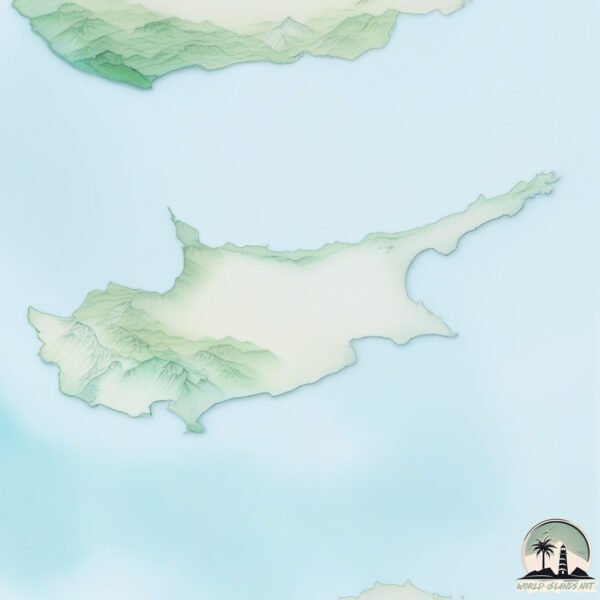Welcome to Cyprus , a Temperate island in the Mediterranean Sea – Eastern Basin, part of the majestic Atlantic Ocean. This guide offers a comprehensive overview of what makes Cyprus unique – from its geography and climate to its population, infrastructure, and beyond. Dive into the details:
Geography and size of Cyprus
Size: 9284 km²Coastline: 754 kmOcean: Atlantic OceanSea: Mediterranean Sea – Eastern BasinContinent: Asia
Cyprus is a Very Large Island spanning 9284 km² with a coastline of 754 km.
Archipel: Mediterranean islands – Encompassing numerous islands in the Mediterranean Sea, each with its own unique culture, history, and natural beauty, from the Balearics to the Greek islands.
Tectonic Plate: Anatolia – A tectonic microplate covering most of Turkey, it’s squeezed between the Eurasian Plate to the north and the African Plate to the south, known for significant seismic activity.
The geographic heart of the island is pinpointed at these coordinates:
Climate and weather of Cyprus
Climate Zone: TemperateClimate Details: Hot-Summer Mediterranean ClimateTemperature: Hot Summer
Climate Characteristics: Characterized by hot, dry summers and mild, wet winters, typical of coastal areas with abundant sunshine.
Topography and nature of Cyprus
Timezone: UTC+02:00Timezone places: Europe/MariehamnMax. Elevation: 1952 m OlymposMean Elevation: 296 mVegetation: Cultivated LandTree Coverage: 11%
The mean elevation is 296 m. Dominating the island’s landscape, the majestic “Olympos” rises as the highest peak, soaring to impressive heights. The island is characterized by Plateau: Elevated flatlands rising sharply above the surrounding area, with a maximum elevation over 500 meters but a mean elevation less than 300 meters, forming unique highland areas on islands.
Dominating Vegetation: Cultivated Land
Vegetation: 16 vegetation zones – Exceptionally Diverse Island
Infrastructure and Travelling to Cyprus
Does the island have a public airport? yes .
Does the island have a major port? yes .
The mean population of Cyprus is 148 per km². Cyprus is Moderately Inhabited. The island belongs to Cyprus .
The name of the island resonates across different cultures and languages. Here is how it is known around the world: Arabic: قبرص; German: Zypern; Spanish: Isla de Chipre; French: Chypre; Portuguese: Chipre; Russian: Кипр; Chinese: 塞浦路斯島
Continuing your journey, Rhodes is the next notable island, situated merely km away.
Places You Must See - Cyprus
GermansCyprus #cyprus #zypern #placestovisit.
Places You Must See - Cyprus
GermansCyprus #cyprus #zypern #placestovisit.
GermansCyprus #cyprus #zypern #placestovisit.
Why is Cyprus Divided? (Short Animated Documentary)
Cyprus, like many countries, isn't whole. However unlike most nations ...
Cyprus, like many countries, isn't whole. However unlike most nations which are split, it's split into three parts with Cyprus itself ...
CYPRUS TRAVEL (2024) | 15 Beautiful Places To Visit In Cyprus (+ Travel Tips!)
The island nation of Cyprus is located in the eastern Mediterranean ...
The island nation of Cyprus is located in the eastern Mediterranean Sea, just to the south of Turkey. With pristine beaches, ancient ...
Cyprus is classified as Developing region: Regions characterized by lower income levels, with economies in the process of industrialization and modernization. The level of income is High income: nonOECD.
News – Latest Updates and Headlines from Cyprus
Stay informed with the most recent news and important headlines from Cyprus. Here’s a roundup of the latest developments.
Loading...
Social Media Posts about Cyprus
Loading...
Please note: The data used here has been primarily extracted from satellite readings. Deviations from exact values may occur, particularly regarding the height of elevations and population density. Land area and coastline measurements refer to average values at mean high tide.

